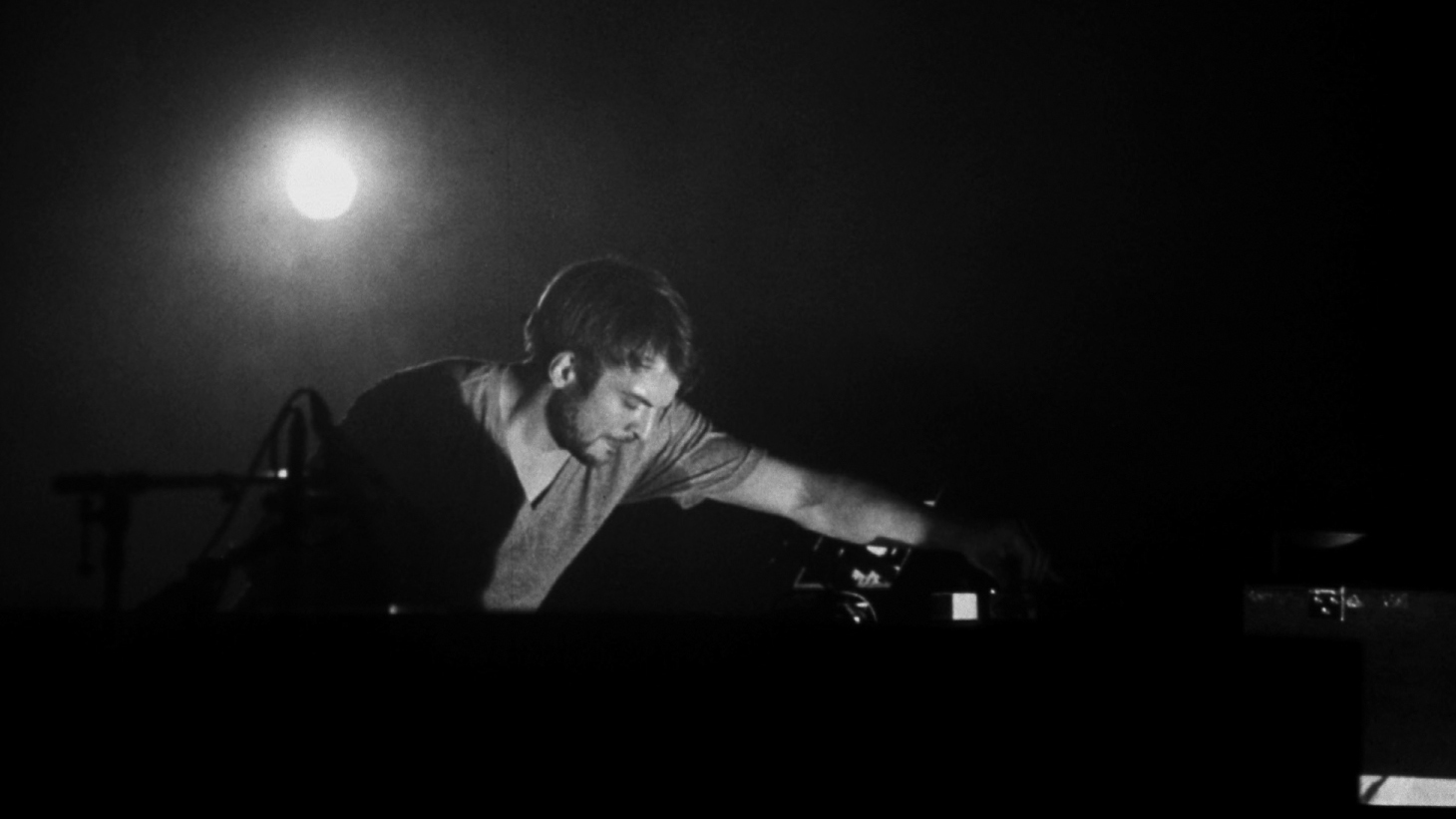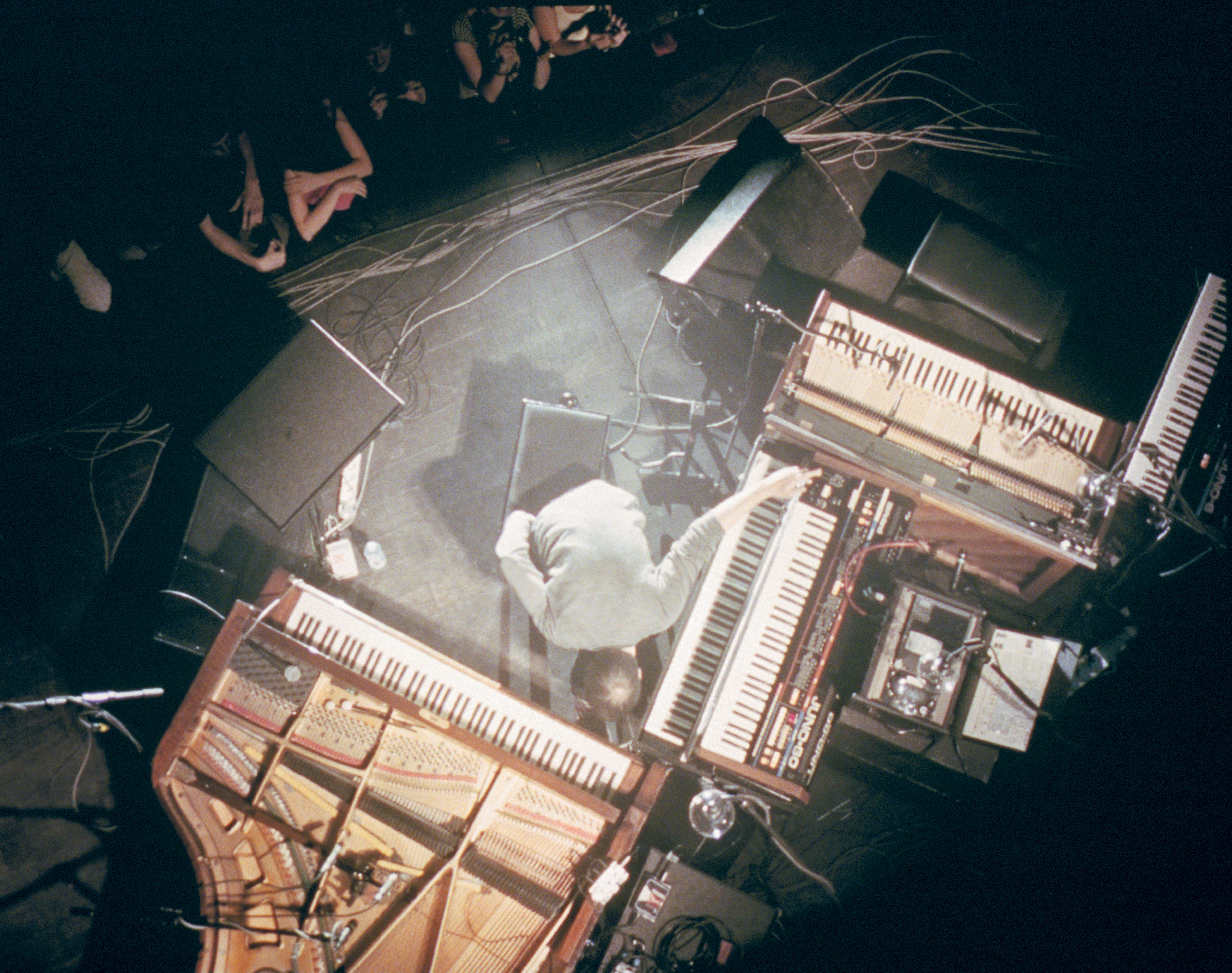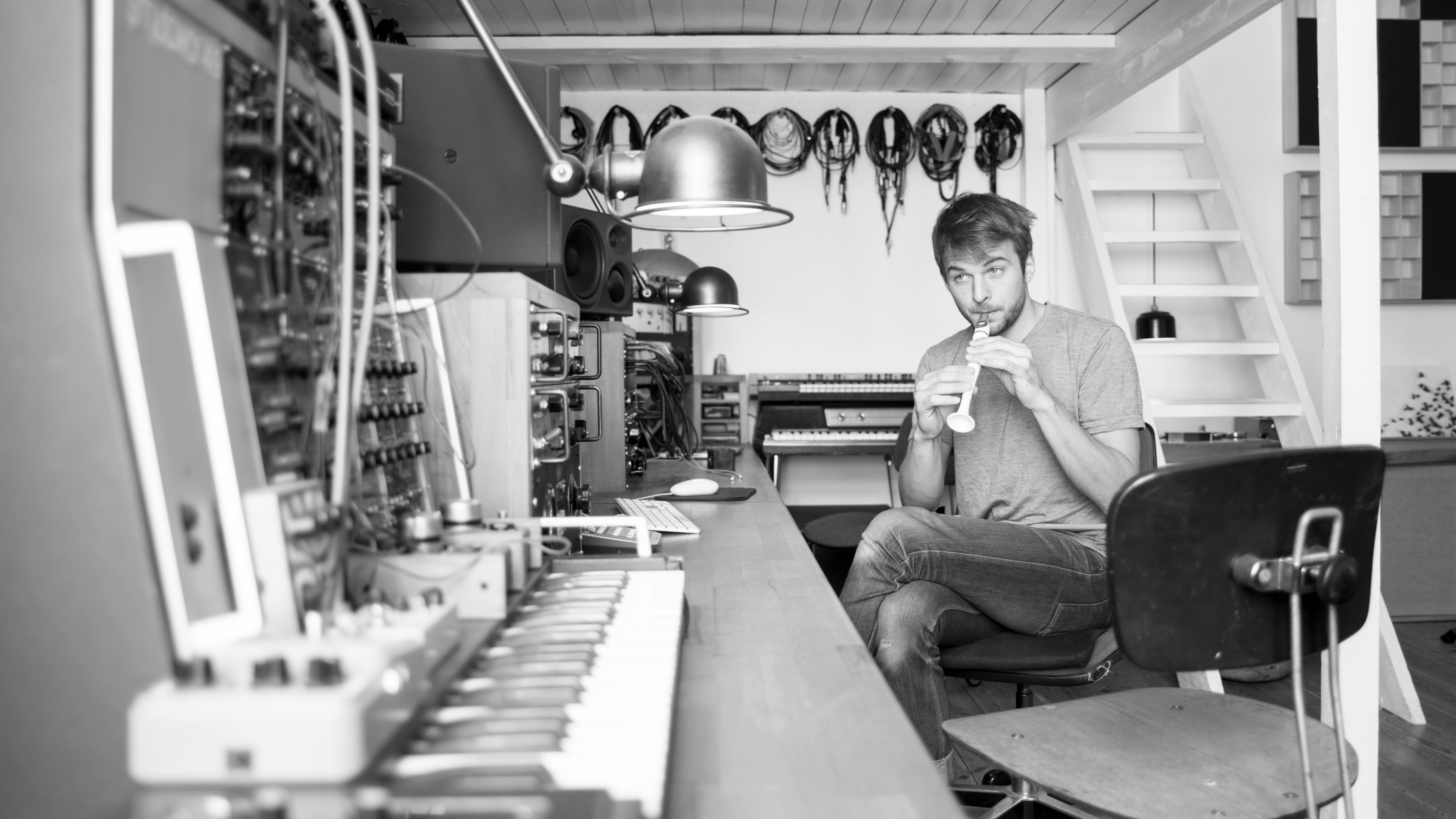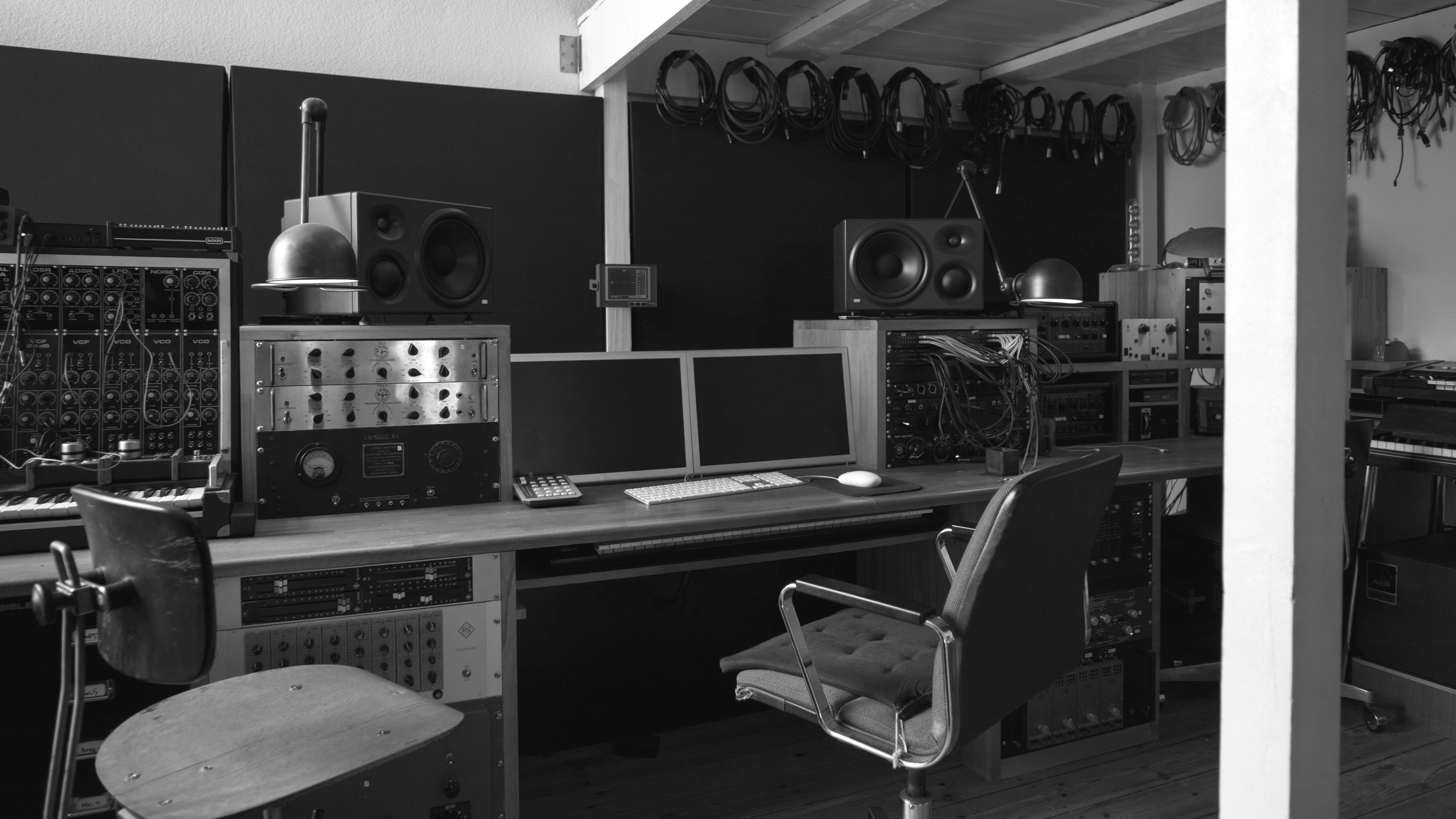
A lot of misconceptions and misplaced labels seem to surround 31-year-old German musician Nils Frahm. The most predominant of these being the description of him as a contemporary classical pianist.
It's a label that's not entirely inaccurate - he is, after all, a classically trained and exceptionally talented pianist - but it's certainly an oversimplification of his musical career to date. As anyone that has seen Frahm perform in recent years will know, whilst the piano takes centre stage in his work, it merely provides the centrepiece to a complex and experimental setup comprised of synthesisers, analogue effects and modified recording technology.
The classical tag doesn't really fit Frahm's work either. While his music has obvious stylistic roots within the works of various 20th Century composers, his method of composition - which is largely improvisational, and often built around experimental mic placement and recording techniques - is equally influenced by jazz, electronic music and the greats of studio innovation.
Aside from his solo work, Frahm is a frequent collaborator, a collector of classic analogue gear and runs his own recording facility, Durton Studio, in Berlin. He works regularly as a mastering engineer, and has produced records for the likes of Peter Broderick and Arcade Fire member Sarah Neufeld.
This month Frahm will release his latest album, Spaces, on long-time home Erased Tapes. Described as something of a pet project, the album is built around live recordings of his performances captured over the past couple of years. The result is less a live album and more - as Frahm puts it - a collage of field recordings, featuring both unreleased compositions and reworked performances of his past releases.
It's also possibly the most potent recording of his music to date. The album manages to successfully capture the intimacy and immediacy of his live performances, whilst also demonstrating the broad sonic range of his blend of acoustic and electrified instruments.
Ahead of the record's release, we caught up with Frahm to chat about the album's gestation, his approach to composition and his relationship with studio technology.
Want all the hottest music and gear news, reviews, deals, features and more, direct to your inbox? Sign up here.

Could you talk us through the instruments you use for your live performances? Is the cover image for Spaces (above) representative of your current live setup?
"I've an upright piano, which has been slightly modified with felt and other things, and which I've had a pickup built into. Then there's usually a Fender Rhodes with some delay pedals, and a Roland Juno 60 analogue synth on top, which is connected to a tape delay. Then there's the grand piano, which has also been modified, in a way that I think sounds right for a grand piano. It's pretty chaotic sometimes to sound check on a busy festival schedule.
"I'm adding a Moog Taurus in now too, so I'm just learning to play bass with my left foot."
What drew you to incorporate those particular electronic elements into your setup?
"I've been collecting old gear since I was 13, so I've always had a studio with tonnes of old synths. People always consider me a classical pianist so they think it's big news when I unroll some cables. In fact I've been doing electronic music my whole life - not commercially, but just for fun. The solo piano thing was the reason why people noticed me, but the influence of electronic music was always there. "
So have you always been interested in composing with electronic elements alongside the piano?
"Since I was 13 or 14 I've always listened to electronic music a lot, and all kinds of experimental music. I've always been interested in those sorts of electronic and electro-acoustic elements. I remember listening to '60s Miles Davis and all that kind of jazz-rock when I was younger and being inspired by the crazy looking stage setups people had. It was pretty normal back then to have two or three keyboard players with ten keyboards each.
"What we have now on one computer, or even just as ten percent of a laptop setup, people had to carry in three trucks. I've always thought this is an advantage sonically, but a disadvantage practically. I don't like cutting corners though, so I take the detour and make my crew carry heavy stuff, which I think sounds so much better."
Obviously, when you start incorporating synths and electronics into your setup, it opens up vast possibilities in terms of sound. With the improvisational nature of your work, do you find it important to impose limitations or constraints on yourself?
"Yes, for example, I never wanted to include a loop station in my setup. If I did that it would probably become too messy with all the possibilities I'd have with loops and playbacks. It would open up Pandora's Box, if you know what I mean. It would maximise the possibilities in a way that would confuse me more than anything.
"I like to try and do something unusual, or almost forbidden."
"Right now I'm at the point where I'm physically very involved; each knob needs to be turned manually, each key needs to be hit the right way, and synths need to be repatched. I like the physical involvement of my solo set right now. There are so many things to do at once, and it's probably more fun to watch somebody that's sweating on stage, rather than just playing the melody lines over a playback.
"It means it's more of a challenge for me to come up with new ideas for songs - working out new ways to use these limited few instruments. When I get tired of that I can still do things in collaboration with other musicians, as I like to do that too. And right now I'm working on a more electronic set."
And are we right in thinking that microphone placement plays a fairly big part in how you work with the acoustic elements of your setup?
"Yea, I think all my ideas come from certain types of sound ideas like that, for sure."
How improvisational are the versions of songs that appear on Spaces? Said And Done, for example, is considerably more expansive than the original recorded version (which appeared on 2009 album The Bells.) Has that evolved over time as you've played it, or is each performance fairly spontaneous?
"It changed throughout the shows. When I recorded the first version of it, that was a single improvisation, and I just isolated those three minutes and put it on the record. People liked it and always pointed that song out and requested it a lot, so I had to learn it myself again to play it live.
"When I first performed it consciously it was similar, but I composed [the current version] throughout my live shows over the last couple of years. I've played it probably 200 times and there were moments when I'd have a new idea during soundcheck or I'd meet a different piano, or different room with different acoustic and get a new idea. I've ended up extending it and extending it until it's now this eight or nine minute thing. That happened through all my touring, and since I never play the same show twice there's always an accident that'll happen which will give me a new idea for a song."
There's several places on the record where you can clearly hear the sound of the audience or the atmospheric influence of the space you're performing in, why did you chose to include takes with these sort of sounds present?
"It was pretty impossible to get it out of it really. I'm not really a fan of trying to fix things in post-production. If I have a great take and there's audience noise then it doesn't bother me at all, or if I have only one tape recording of a great jam session with friends and there's a lot of tape hiss then I'm not the sort of guy who'll try and fix it. I don't like to use denoisers and stuff to hide certain things. I think it's all about a certain atmosphere in recordings, and what I like about recording with an audience is that it works atmospherically. Although it might not really work for people who are used to very clean studio recordings."
Did you do any work to the recordings on Spaces in the studio then?
"I think I mixed them for a week, but before that I listened to all the shows, maybe 30 or so, during a solid week of listening and isolating certain parts of the recordings. It was a bit like cherry picking; getting rid of stuff I didn't like and picking certain moments I really liked. Then I had the opportunity to pick the moments that really worked. Rather than just focusing on one show that came out OK, I thought it would be better to pick the special moments throughout all of them."
You were recording for about two years in total, is that right?
"Yea, I was basically doing it as a side project and nobody really took it seriously. I told my label I would record some live shows, but nobody really expected anything from it, so I just kept recording the shows. When I turned in the master everyone was like, 'Oh, this is actually turning out quite well.'
"It was a slow process though, and that's part of what I enjoyed about it. There was no pressure at all; if it hadn't turned out well I would have just put it in the trash and nobody would have cared. It was an experiment, and fortunately it worked."

Nils Frahm in his Berlin studio. © Alexander Schneider
What's your Berlin studio like? Do you have quite a lot of hardware and analogue gear?
"Yea, I'm old fashioned in that way. I have a soundcard and a computer, but I've also got an eight-track 1-inch Studer tape machine and two master tape recorders. I've five or six tape delays. I've reverbs, spring reverbs and all this really old, cool gear from all over the world. All sorts of EQs and preamps too.
"It's all quite modified, as I'm into electronics and circuits too. I have certain technicians and talented people who help me rebuild old '30s, '40s and '50s tube gear to meet my needs. We'll buy stuff and open it up, take it apart, replace parts and build new gear out of it, which sounds interesting and has certain colourful tonal characteristics. I have it all patched-up with a self-built mixing console. It's madness."
What's your approach like when you're recording or producing other artists? Are you quite hands-on in the studio? Do you have much input on the tracks?
"It's important that [the artist] doesn't have to care too much about technicalities. It can be very uncomfortable working with somebody who just puts 20 microphones in front of a guitar and doesn't know which mic sounds best. I always try to work hard on the technical aspects myself, and experiment alone, so that when we're in the room I can work with people on their artistic vision.
"I want all the technical problems to be solved so it can be very easy going. I'm not completely there yet, but that's my vision of how I want to work: make it an organic process and make it as fast as possible, so you don't have tens of Pro Tools sessions with 500 tracks and weeks of mixing. I'd rather make a record in seven days, like in the old analogue days. Most of my favourite records were recorded in two or three sessions, and mixed directly through the process. That's something I want to learn, or relearn in a way, as I think that's a skill that gets a little lost in this time of total recall where people have millions of possibilities after they've recorded something. I'd rather just have four tracks and work with that. It's so much faster.

© Alexander Schneider
"So I try to get a good sounding signal from the very first moment, and obviously that comes from the performer and the instrument itself. Other people who record maybe get their priorities wrong. They think it will sound good if they just send the master through a tape machine and that's it, but it's not that easy, and it never has been. First of all the arrangement needs to sound good - if it doesn't sound good in the room then there's not much you can do about it.
"I try and talk to musicians and see what they expect and what they want, and then I like to experiment with them to create something they didn't expect and that I've never heard. I like to try and do something unusual, or almost forbidden; something that gives people an interesting memory of the session.
"That's what I did with Sarah Neufeld [of Arcade Fire] for her solo record, for example. We took the tape machine to various places, like parking garages and interesting sounding places with large reverbs. We recorded in five locations in one day, just driving my car around with a tape recorder, recording something here, record something there, in an old building, under a bridge, things like that. That worked for her but somebody else might need something completely different, so I try to be flexible."
Finally, do you find that being based in Berlin - a city with a rich history of electronic music and music technology - has an influence on the way you work?
"It's comfortable to be in a place where everybody just stops by once in a while, where a lot of musicians come through touring. It makes it easy to collaborate.
"One aspect of Berlin which is great is that it's a rather quiet city. Acoustically it's built in a way that you can record piano in your living room without sirens and a mass of car noise from outside. For my type of music, where I record very quiet signals at times, it's good that I don't need to close myself off in super-isolated proper studios. When you're in New York and at an apartment there, it's just impossible to record a quiet piano take because there's so much environmental noise. It would probably affect my music, in a way. There are places where you can do some types of music better than others, so I think this city has an influence on my in that way."
Spaces is released via Erased Tapes on 18 November
I'm the Managing Editor of Music Technology at MusicRadar and former Editor-in-Chief of Future Music, Computer Music and Electronic Musician. I've been messing around with music tech in various forms for over two decades. I've also spent the last 10 years forgetting how to play guitar. Find me in the chillout room at raves complaining that it's past my bedtime.